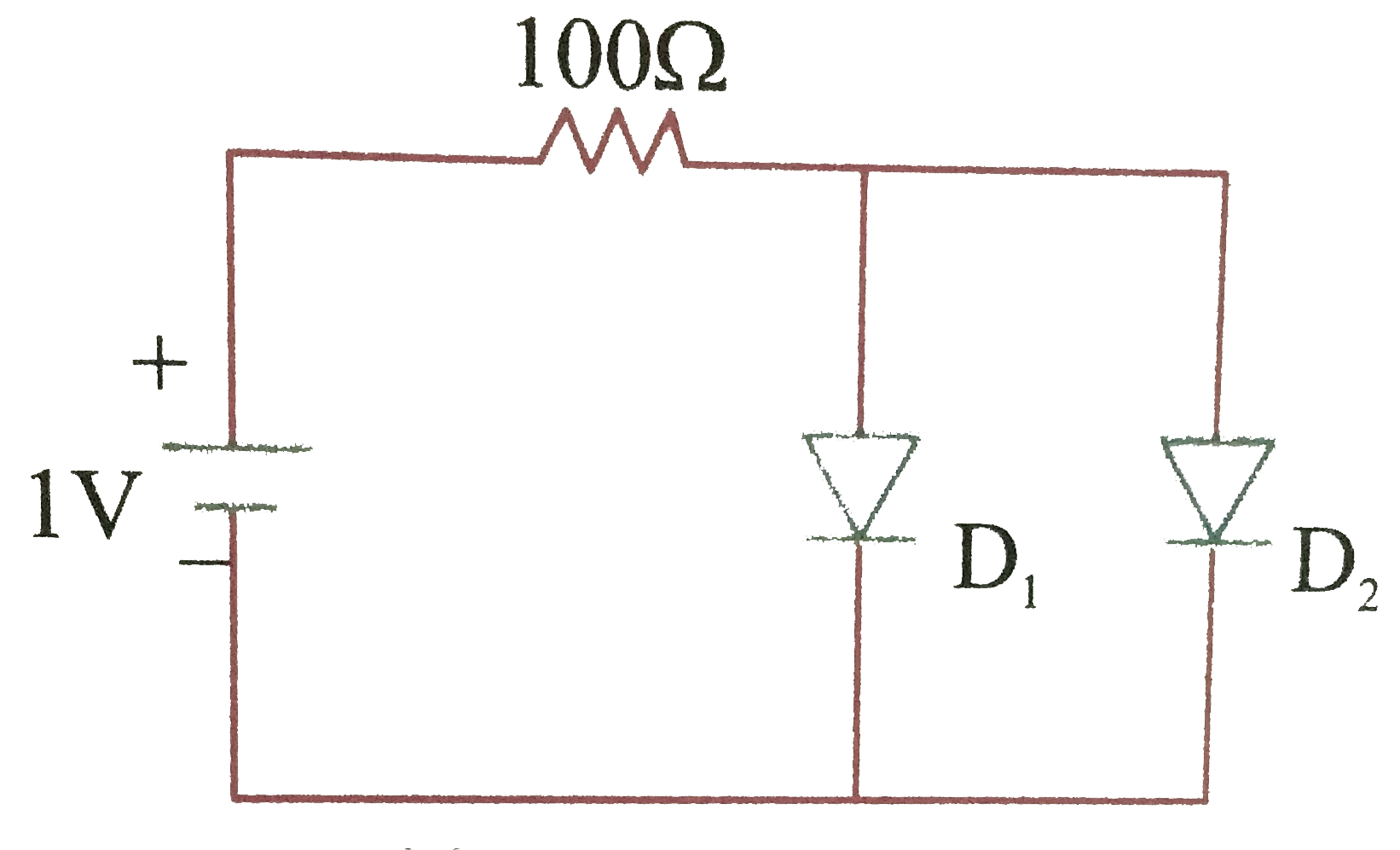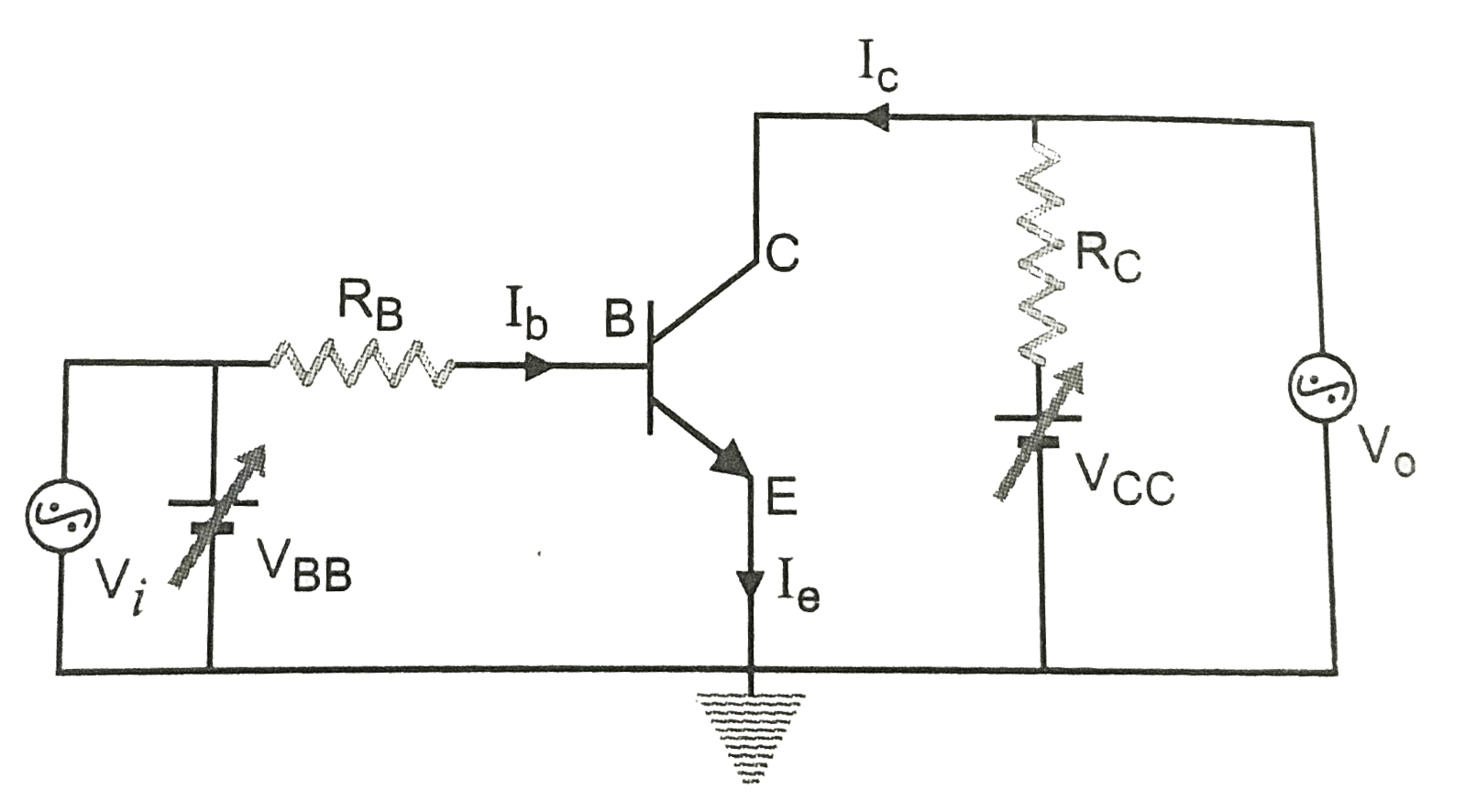Complete Solutions to Solved Example of chapter SEMI CONDUCTOR DEVICES of Class 12 book with complete answers and questions
| Class 12 | PHYSICS |
| Chapter | SEMI CONDUCTOR DEVICES |
| NARAYANA | Solved Example |
| Number Of Questions | 32 |
| Academic Year | 2023-24 |
The number of silicon atoms per `m^(3) is 5xx10^(28)`. This is doped simultaneously with `5xx10^(22)` atoms per `m^(3)` of Arsenic and `5xx10^(20) per m^(3)` atoms of indium. Calculate the number of electrons and holes. Given that `n_(i)=1.5xx10^(16)m^(-3)`. Is the material n-type or p-type?
View SolutionA semiconductor has an electron concentration of `0.45 xx 10^(12) m^(-3)` and a hole concentration of `5.0 xx 10^(20) m^(-3)`. Calculate its conductivity. Given electron mobility `= 0.135 m^(2) V^(-1) s^(-1)`, hole mobility `= 0.048 m^(2) V^(-1) s^(-1)`,
View SolutionA `N`-type silicon sample of width `4xx10^(-3)m`, thickness and length `6xx10^(-2)m` carriers a current of `4.8mA`, when the voltage is applied across the length of the sample. The free electron density is `10^(22)m^(-3)`
View SolutionThe energy gap of pure `Si` is `1.1 eV` The mobilities of electrons and holes are respectively `0.135 m^(2) V^(-1) s^(-1)` and `0.048 m^(2) V^(-1) s^(-1)` and can be taken as independent of temperature. The intrinsic carrier concentration is given by `n_(i) = n_(0) e^(-Eg//2kT)`.
Where `n_(0)` is a constant, `E_(g)` The gap width and `k` The Boltmann's constant whose vaue is `1.38 xx 10^(-23) JK^(-1)` The ratio of the electrical conductivities of `Si` at `600 K` and `300 K` is.
View SolutionIn a `p-n` junction diode, the currect `I` can expressed as `I=I_(0) exp((eV)/(2k_(B)T)-1)` where `I_(0)` is called the reverse saturation current, `V` is the voltage across the diode and is positive for forward bias and negative for reverse bias, and `I` is the current through the diode, `K_(B)` is the Boltzmann constant `(8.6 xx 10^(-5) eV//K)` and `T` is the absolute temperature. If for a given diode `I_(o) = 5 xx 10^(-12) A` and `T = 300 K`, then
(a) What will be the forward current at a formward voltage of `0.6V` ?
(b) What will be the increase in the current if the voltage across the diode is increased to `0.7 V` ?
( c) What is the dynamic resistance ?
(d) What will be current if reverse bias voltage changes from `1 V` to `2 V` ?
View SolutionThe energy of a photon of sodium light `(lambda=589 nm)`equal the band gap of a semiconducting material.(a)Find the minimum energy E requried to create a hole-electron pair.(b)Find the value of `E//kT`at a temperature of 300K.
View SolutionThe `V-I` characteristic of a silicon diode is shown in the Fig. Calculate the resistance of the diode at
(a) `I_(D) = 15 mA` and
(b) `V_(D) = -10 V`.
 .
.
View SolutionTwo junction diodes, one of germanium `(Ge)` and other of silicon `(Si)` are connected as shown in fig to a battery of `12 V` and a load resistance `10 kOmega`. The germanium diode conducts at `0.3 V` and silicon diode at `0.7 V`. When current flows in the circuit, the potential of terminal `Y` will be
 .
.
View SolutionFind the maximum voltage across `AB` in the circuit shown in Fig. Assume that diode is ideal.
 .
.
View SolutionFind the voltage `V_(A)` in the curcuit shown in figure. The potential barrier for `Ge` is `0.3 V` and for `Si` is `0.7 V`
 .
.
View SolutionConsidering the circuit and data given in the diagram, calculate the currents flowing in the diodes `D_(1)` and `D_(2)` Forward resistance of `D_(1)` and `D_(2)` is `20 Omega`.
 .
.
View SolutionIn the circuit shown. The potential drop across each capacitor is (assuming the two diodes are ideal).
 .
.
View SolutionA potential barrier of 0.50V exists across a p-n junction.(a) If the depletion region is `5.0xx10^(-7)`m wide,what is the intensity of the electric field in this region?(b) An electron with speed`5.0xx10^(5)m s^(-1)`approaches the p-n junction form the n-side.With what speed will it enter the p-side?
View SolutionA `p-n` diode is used in a half wave rectifier with a load resistance of `1000 Omega`. If the forward resistance `(r_(f))` of diode is `10 Omega`, calculate the efficiency of this half wave rectifier.
View SolutionA full wave rectifier uses two diodes with a load resistance of `100 Omega`. Each diode is having negligible forward resistance. Find the efficiency of this wave rectifier.
View SolutionIf a `p-n` junction diode, a square input signal of `10 V` is applied as shown.

Then the out put signal across `R_(L)` will be
 .
.
View SolutionFor the circuit shown in figure, Find
(1) the output voltage ,
(2) the voltage drop across series resistance ,
(3) the current through Zener diode.
 .
.
View SolutionCurrent amplification factor of a common base configuration is `0.88`. Find the value of base current when the emitter current is `1 m A`.
View SolutionIn a transistor, the emitter circuit resistance is `100 Omega` and the collector resistance is `100 Omega`. The power gain. If the emitter and collector currents are as sumed ton be equal, will be.
View SolutionFrom the output characteristics of common emitter circuit shown in Fig., calculate the value of `beta_(ac)` and `beta_(dc)` of the transistor when `V_(cE)` is `10 V` and `I_c =4.0mA`.

View SolutionIn common emitter transistor as shown in Fig., the `V_(BB)` supply can be varied from 0 V to 5.0V. The Si. Transistor has `beta_(ac)=250` and `R_(B)=100kOmega, R_(c)=1k Omega,V_(C C)=5.0V`. Assume that when the transistor is saturated, `V_(CE)=0V` and `V_(BE)=0.8V`. Calculate the minimum base current, for which the transistor will reach saturation. Hence, determine `V_(i)` when the transistor is 'switched on' find ranges of `V_(i)` for which the transistor is switched off and switched on.

View SolutionTwo amplifiers are connected one after the other in series (cascaded). The first amplifier has a voltage gain of 10 and the second has a voltage gain of 20 . If the input signal is 0.01 V , calcualte the output AC signal .
View SolutionIn a single state transistor amplifier, when the signal changes by `0.02 V` the base current by `10 mu A` and collector current by `1 mA`. If collector load `R_(C) = 2k Omega` and `R_(L) = 10 k Omega`, Calculate :
(i) Current Gain
(ii) Input Impedance,
(iii) Effective `AC` load,
(iv) Voltage gain and
(v) Power gain.
View SolutionAn n-p-n transistor in a common - emitter mode is used as a simple voltage amplifier with a collector current of 4 mA. The positive terminal of a 8 V battery is connected to the collector through a load resistance ` R_L ` and to the base through a resistance ` R_B ` . The collector - emitter voltage ` V_(CE) = 4 V` , the base - emitter voltage ` V_(BE) = 0.6 V` and the current amplification factor ` beta = 100 ` . Calculate the values of ` R_L ` and `R_B` .
View SolutionIn a negative feedback amplifier, the gain without feedback in `100`, feed back ratio is `1//25` and input voltage is `50 m V`. Calculate
(i) gain with feedback
(ii) feedback factor
(iii) output voltage
(iv) feedback voltage
(v) new input voltage so that output voltage with feedback equals the output voltage without feedback.
View SolutionConvert binary number `10111` into decimal number.
View SolutionThe Boolean expression of the output `Y` of the inputs `A` and `B` for the circuit shown in the fig.
 .
.
View SolutionThe diagram of a logic circuit is given below. The output `F` of the circuit is represented by

View SolutionThe logic circuit and its truth table are given, what is the gate `X` in the diagram
 .
.
View SolutionYou are given two circuit as shown in Fig.and . Which consists of NAND gates. Identify the logic operation carried out by the two circuits.

View SolutionJustify the output wavefrom (y) of the OR gate for input and as gives in Fig.

View SolutionDraw logic diagrams for the Boolean expressions given below :
(i) `A * overline B + overline A * B = Y`
(ii) `(A + overline B)* (overline A + B) = Y`.
View Solution
Solved Example questions and complete solutions for chapter SEMI CONDUCTOR DEVICES of NARAYANA PHYSICS (HINGLISH) of Class 12